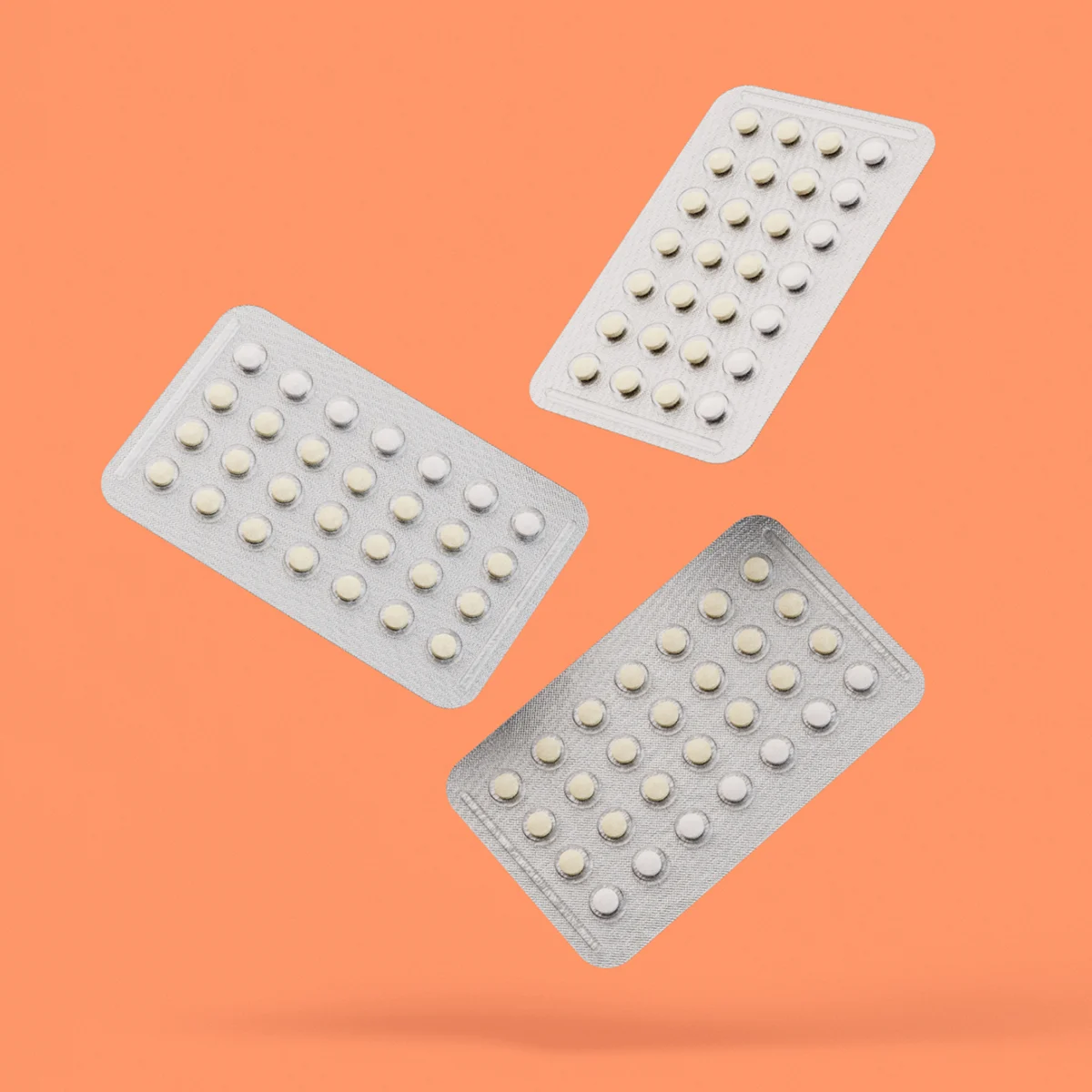Annovera benefits and side effects

Reviewed by Steve Silvestro, MD, Ro,
Written by Chimene Richa, MD
last updated: Apr 21, 2021
5 min read
Here's what we'll cover
Some people have trouble remembering to take their birth control pill each day, but missing pills can lead to unwanted pregnancies. If this sounds familiar, you may be curious about Annovera birth control, a newer form of birth control that is more “set it and forget it.”
On the surface, this may sound like a perfect solution for people who don’t want to think about birth control every day. However, like all medications, Annovera has potential pros and cons. Understanding the facts can help you and your healthcare provider decide whether Annovera is suitable for you.
What is Annovera?
Annovera (active ingredients segesterone acetate/ethinyl estradiol) is a hormonal birth control vaginal system approved by the FDA in 2018. It differs from other contraceptive vaginal rings, like NuvaRing, in that you can use the same ring for 13 menstrual cycles or an entire year.
Annovera is a flexible, donut-shaped silicone ring you insert into the vagina for three weeks. In the fourth week, you remove it, wash it, and store it for seven days. After the seven days have passed, you can reinsert the Annovera ring for the next cycle. If you decide you don’t want to be on birth control anymore, don’t reinsert it. This device has enough medication to last for a whole year without needing to pick up a replacement (FDA, 2018).
How does Annovera work?
Like combination hormonal contraceptives, the Annovera ring contains both estrogen and progestin hormones to prevent pregnancy. The hormones are in specialized channels in the ring, which slowly release the medication over time. These hormones work in the following ways (Kerns, 2020):
Stopping ovulation to prevent eggs from leaving the ovaries
Thickening the cervical mucus to keep sperm from reaching the egg
Annovera is easy to use, and insertion doesn’t require a special trip to your healthcare provider—you can do it yourself. Ideally, insert Annovera between days 2 and 5 of your menstrual cycle; this way, you won't need backup contraception (like condoms, spermicide, etc.). If it has been more than five days since your last period, you should use backup birth control for the first seven days of using Annovera.
Keep the Annovera ring in for 21 days; if it comes out for less than two hours during this time, you can wash it and reinsert it. However, if it is more than two hours before you reinsert it, you will need to use backup contraception (like condoms, spermicide, etc.) for the next seven days.
After 21 days in the vagina, Annovera is removed, washed, and stored at room temperature for seven days. By removing the hormone-releasing vaginal device, you experience withdrawal vaginal bleeding similar to what happens when you have your hormone-free week on the pill. You can repeat this process up for a full year, or 13 menstrual cycles, without needing a replacement.
Benefits of Annovera
There are many benefits of Annovera birth control, including:
Effective contraception—Clinical trials show that the Annovera ring is 97.5% effective at preventing pregnancy (Archer, 2019).
Localized hormone release—Vaginal rings only release hormones locally, so the medication is not circulating throughout your body. This may decrease the risk of side effects.
Easy to maintain—The Annovera ring does not need refrigeration and can stay at room temperature during the hormone-free week. You clean it with mild soap and water.
Comfortable—Clinical trials show that over 89% of people who use Annovera felt that it was comfortable and easy to use (Merkatz, 2014).
No need to remove during sex—The data indicates that 95% of people do not have issues with the vaginal ring coming out during sex, and around 70% do not feel Annovera during sex (Stifani, 2018).
Convenient—You don’t have to set a daily alarm or keep a pack of pills on you at all times with Annovera. Once you insert the ring, you leave it in place for three weeks — that means 21 days of brain vacation from worrying about your contraception. You can hold onto the same device for up to 13 months, so there’s no need to run back and forth to the pharmacy or get a prescription refill. Also, there is no need to remove Annovera during sex. If need be, you can wear a tampon while Annovera is in place.
Reversible—Anytime you want to stop birth control, remove the ring, and your fertility will return to what it was before (Kerns, 2020).
Safe for people with latex allergies—Annovera is made of silicone and is latex-free.
Doesn’t appear to cause weight gain—To date, the data does not show any significant weight gain while using Annovera (Gemzell-Danielsson, 2019).
Side effects of Annovera
Like all medications, Annovera does carry a risk of side effects. The Annovera vaginal ring can unintentionally come out about 7% of the time, most often during the first cycle of use. If it is out for less than two hours, then you don’t need to do anything after reinserting it. More than two hours until reinsertion requires backup contraception for the next seven days.
Some of the other common side effects include (Gemzell-Danielsson, 2019):
Headaches
Nausea
Vaginal discharge
Abdominal pain
Spasms of the uterus
Vaginal or vulva fungal/yeast infections
Heavy, painful menstrual bleeding
Breakthrough or irregular bleeding
Breast tenderness
Vomiting
Genital itching
Rarely, serious adverse events may occur in some people taking Annovera. The most concerning of these is the development of venous thromboembolism (VTE). VTE is a blood clot in your veins that can travel to your heart, lungs, brain, etc., and lead to severe, sometimes lethal consequences. VTEs are a risk associated with any of the combination hormonal birth control methods and are not unique to Annovera (Gemzell-Danielsson, 2019). Other serious side effects include psychiatric events, toxic shock syndrome, allergic reactions, and spontaneous abortions (FDA, 2018).
Another downside of using Annovera is the cost. According to GoodRx.com, the current out-of-pocket price of a single Annovera ring is over $2000. Compare that to around $50–$100 per month for Nuvaring or $19–$40 for a 3-month supply of birth control pills. Check with your health insurance provider, as many insurance plans cover Annovera (GoodRx, n.d.).
Who should avoid using Annovera?
Annovera isn’t appropriate for everyone. The FDA has issued a black boxed warning (the most serious warning they release) against using it in women who are over 35 and smoke cigarettes. This group has a higher risk of developing VTEs, heart attacks, and strokes if they use combination hormonal contraception like Annovera (FDA, 2018).
Talk to your healthcare provider and let them know about any medical conditions you may have, especially migraine headaches, depression, seizures, diabetes, high blood pressure, high cholesterol, gallbladder disease, liver disease, heart disease, or kidney disease.
You should also avoid using Annovera if you have any of the following conditions (FDA, 2018):
Increased risk of arterial or venous thrombotic disease, like heart attacks, stroke, pulmonary embolism, etc.—including people with coronary artery disease, uncontrolled high blood pressure (hypertension), atrial fibrillation, or diabetes
Current or history of breast cancer or other estrogen or progestin-sensitive cancers
Liver tumors, or liver diseases, like acute hepatitis or severe cirrhosis
Abnormal uterine bleeding of an unknown cause
Allergy or hypersensitivity to any of the ingredients in Annovera
Any condition that requires the use of hepatitis C drug combinations containing ombitasvir/paritaprevir/ritonavir, with or without dasabuvir
Don’t use Annovera without getting medical advice from your healthcare provider if you think you may be pregnant. You can start Annovera four weeks after having a baby if you are not breastfeeding; you should not use it if you are currently breastfeeding (FDA, 2018).
DISCLAIMER
If you have any medical questions or concerns, please talk to your healthcare provider. The articles on Health Guide are underpinned by peer-reviewed research and information drawn from medical societies and governmental agencies. However, they are not a substitute for professional medical advice, diagnosis, or treatment.
Archer, D. F., Merkatz, R. B., Bahamondes, L., Westhoff, C. L., Darney, P., Apter, D., et al. (2019). Efficacy of the 1-year (13-cycle) segesterone acetate and ethinylestradiol contraceptive vaginal system: results of two multicentre, open-label, single-arm, phase 3 trials. The Lancet Global Health, 7 (8), e1054–e1064. doi: 10.1016/s2214-109x(19)30265-7. Retrieved from https://pubmed.ncbi.nlm.nih.gov/31231065/
Gemzell-Danielsson, K., Sitruk-Ware, R., Creinin, M. D., Thomas, M., Barnhart, K. T., Creasy, G., et al. (2019). Segesterone acetate/Ethinyl estradiol 12-month contraceptive vaginal system safety evaluation. Contraception, 99 (6), 323–328. doi: 10.1016/j.contraception.2019.02.001. Retrieved from https://pubmed.ncbi.nlm.nih.gov/30831102/
GoodRx (n.d.) Annovera. Retrieved on Apr 16, 2021 from https://www.goodrx.com/annovera
Kerns, J. & Darney, P.D. (2020, Aug). Contraception: hormonal contraceptive vaginal rings. Schreiber, C.A. & Eckler, K (Eds.). Retrieved from https://www.uptodate.com/contents/contraception-hormonal-contraceptive-vaginal-rings
Merkatz, R. B., Plagianos, M., Hoskin, E., Cooney, M., Hewett, P. C., & Mensch, B. S. (2014). Acceptability of the nestorone®/ethinyl estradiol contraceptive vaginal ring: development of a model; implications for introduction. Contraception, 90 (5), 514–521. doi: 10.1016/j.contraception.2014.05.015. Retrieved from https://pubmed.ncbi.nlm.nih.gov/24993487/
Stifani, B. M., Plagianos, M., Vieira, C. S., & Merkatz, R. B. (2018). Factors associated with nonadherence to instructions for using the Nestorone®/ethinyl estradiol contraceptive vaginal ring. Contraception, 97 (5), 415–421. doi: 10.1016/j.contraception.2017.12.011. Retrieved from https://pubmed.ncbi.nlm.nih.gov/29269252/
U.S. Food and Drug Administration (FDA). (2018, Aug). Annovera. Retrieved on Apr 16, 2021 from https://www.accessdata.fda.gov/drugsatfda_docs/label/2018/209627s000lbl.pdf










